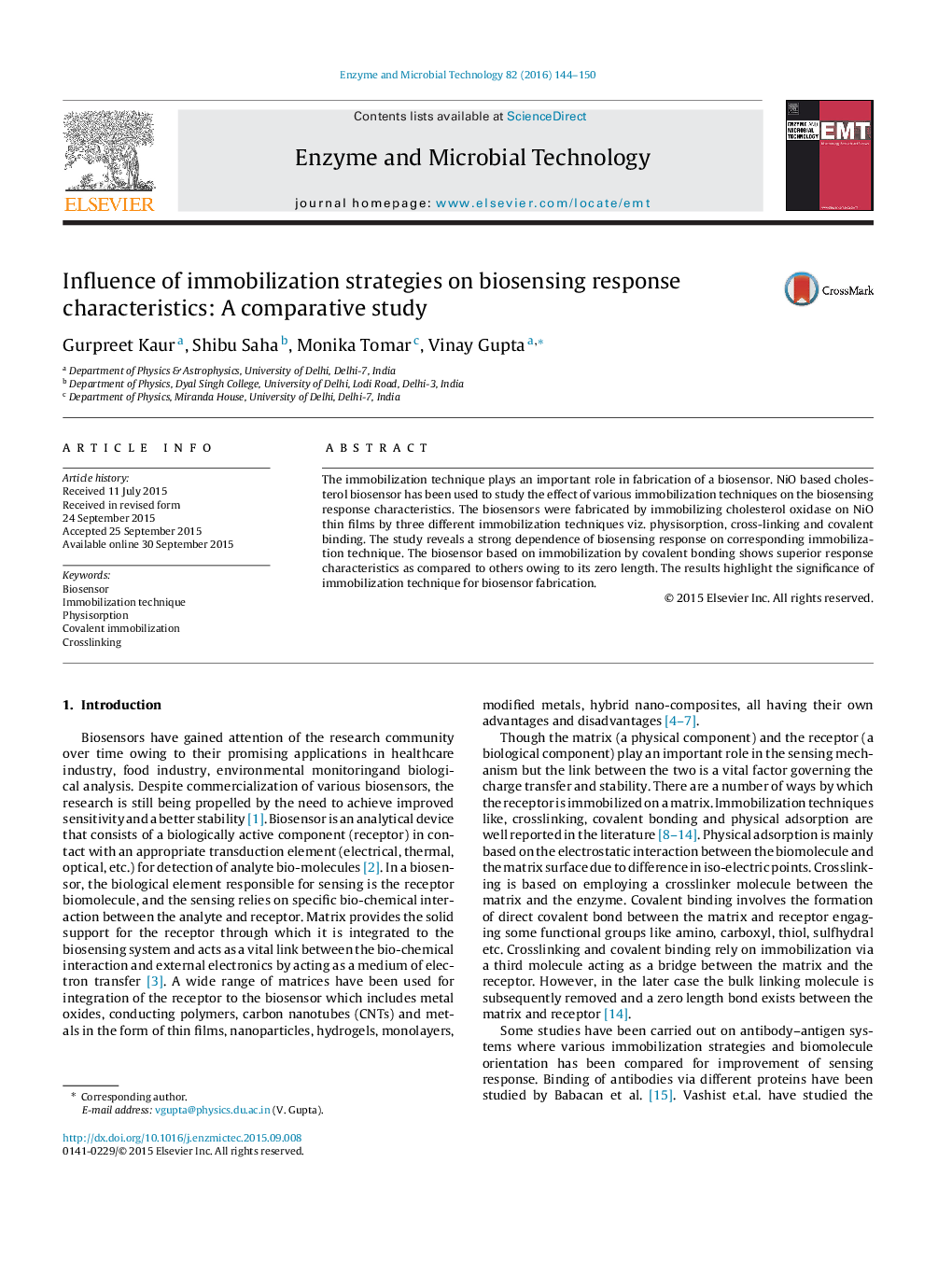| Article ID | Journal | Published Year | Pages | File Type |
|---|---|---|---|---|
| 16908 | Enzyme and Microbial Technology | 2016 | 7 Pages |
•A comparison of three immobilization techniques has been made.•Dependence of immobilization technique on biosensing response observed.•Stable conformational orientation of enzyme perceived in covalent immobilization.•Covalent immobilization proves to be the best owing to its zero length.
The immobilization technique plays an important role in fabrication of a biosensor. NiO based cholesterol biosensor has been used to study the effect of various immobilization techniques on the biosensing response characteristics. The biosensors were fabricated by immobilizing cholesterol oxidase on NiO thin films by three different immobilization techniques viz. physisorption, cross-linking and covalent binding. The study reveals a strong dependence of biosensing response on corresponding immobilization technique. The biosensor based on immobilization by covalent bonding shows superior response characteristics as compared to others owing to its zero length. The results highlight the significance of immobilization technique for biosensor fabrication.
